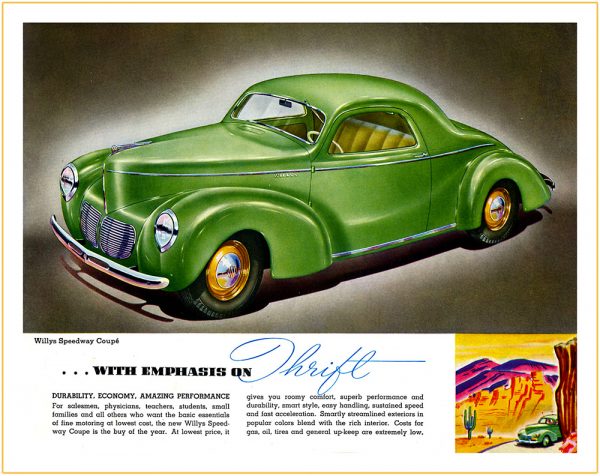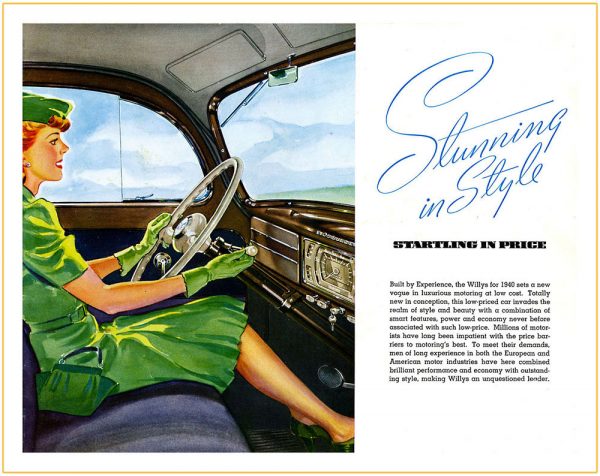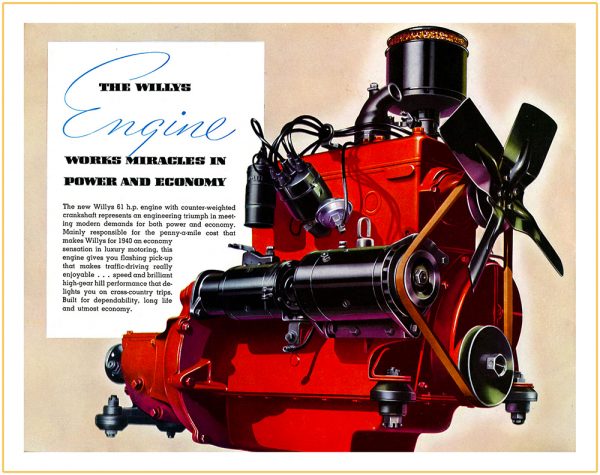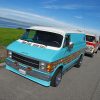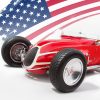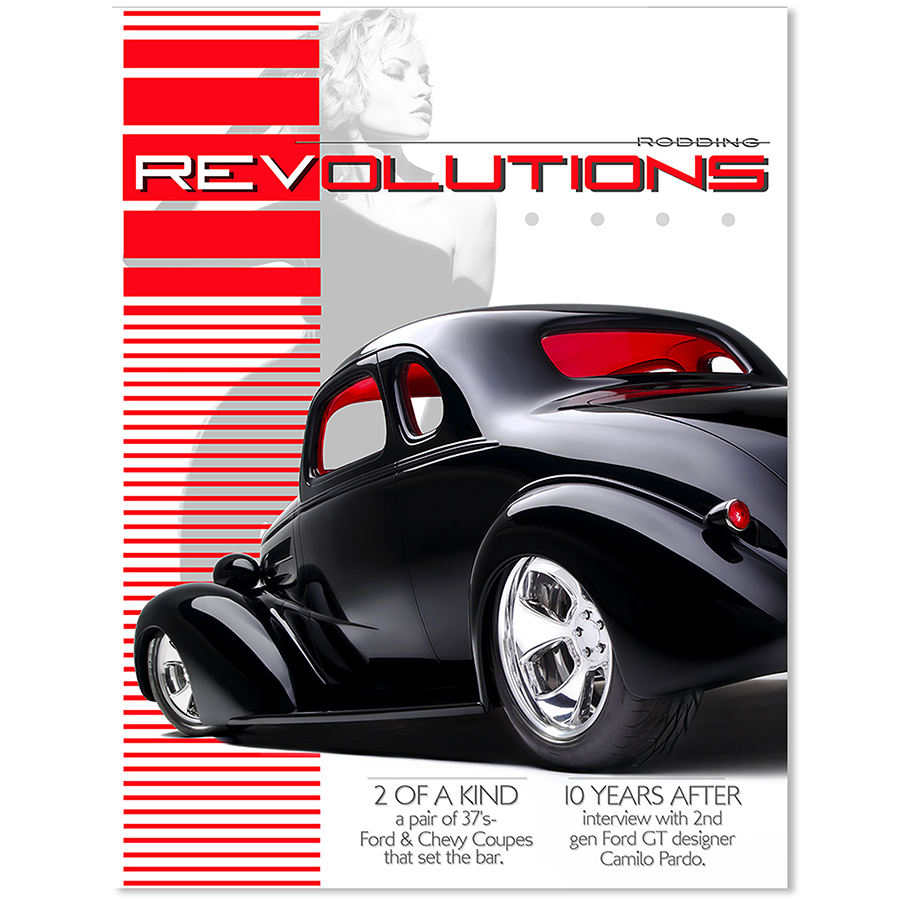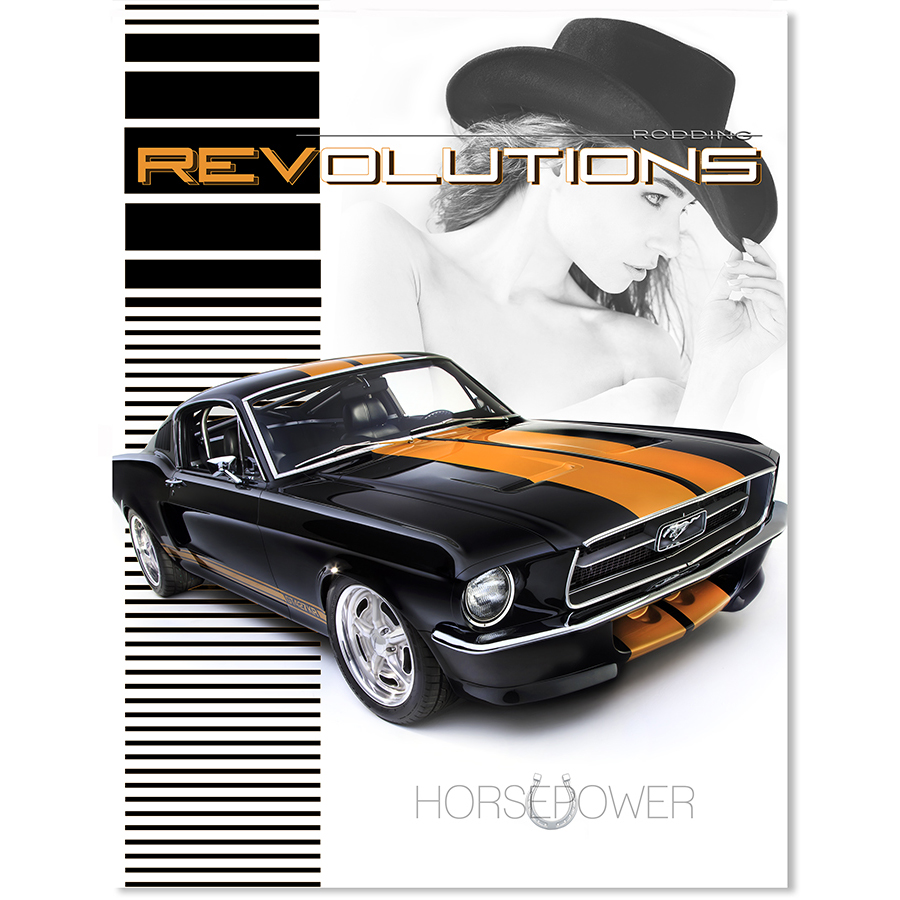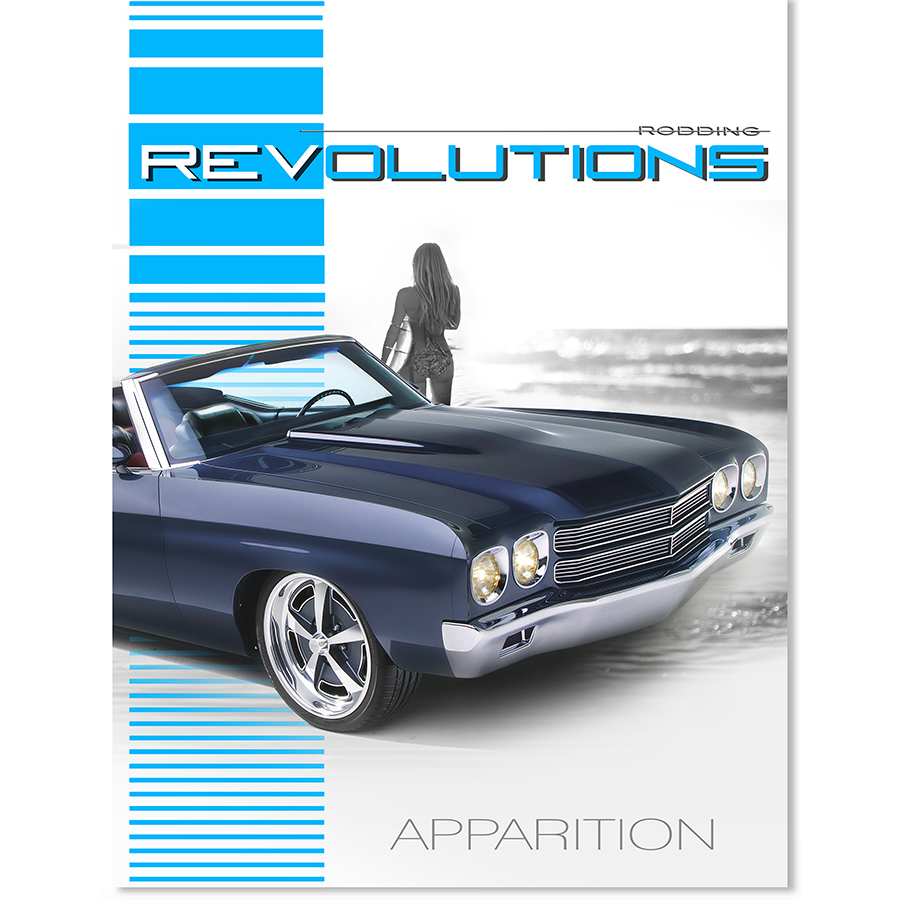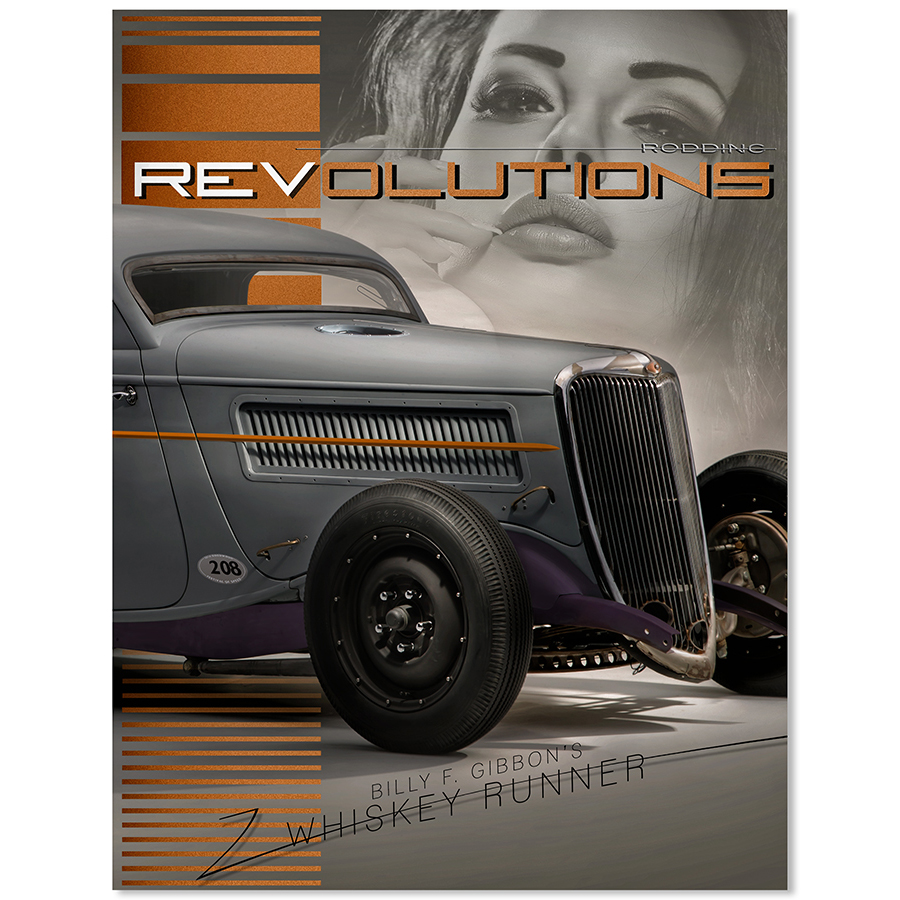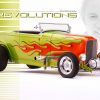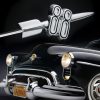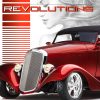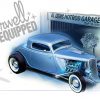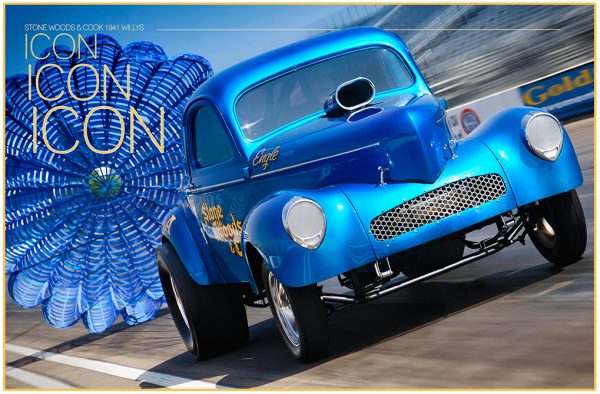
As legends go, few drag racing teams have achieved more iconic status than the widely celebrated Stone Woods and Cook team that terrorized the nation’s dragstrips with its supercharged Willys Gassers throughout the sixties. Their popularity was further confirmed in 1982 when Hot Rod Magazine named the Stone Woods Cook Willys the most famous drag car of all time. Twenty six years later as testimony to their staying power, the team topped the voting in the National Hot Rod Association’s National Dragster Favorite Race Car Ever poll conducted in 2008. The S-W-C Gassers have been memorialized in model cars, Hot Wheels, posters, t-shirts, fan pages and every sort of recognition imaginable including a permanent berth in Wally Parks NHRA Motorsports Museum.
The team was founded in the late fifties by Tim Woods and Fred Stone. Woods was the successful owner of a construction company in Los Angeles and Stone was the company manager. Together they formed what is now widely recognized as the first black drag racing team during a period in history when they were often not allowed to enter the track and had to watch their own car run from the spectator stands. Many fans today do not realize that it was the first racially integrated team with black car owners and a white driver, Doug Cook. As such, they were the first black drag racing team to win a national drag racing title.
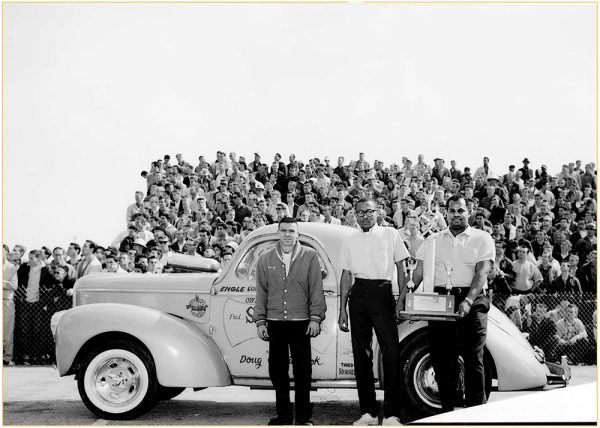
“Together they formed what is now widely recognized as the first black drag racing team - during a period in history when they were often not allowed to enter the track and had to watch their own car run from the spectator stands.”
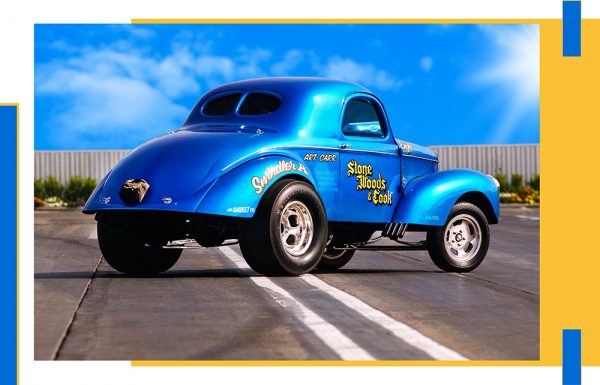
Stone Woods and Cook were among the elite group that kicked off the notorious barnstorming Gasser Wars in the '60s. Match racing became a major hallmark of the sixties with colorful teams like Stone, Woods and Cook, Big John Mazmanian, Junior Thompson, Ohio George Montgomery, the Mallicoat Brothers, and K.S. Pittman drawing massive crowds at dragstrips across the nation. Their powerful performance and self-fueled public relations wars were broadly trumpeted by the racing tabloids. Professional drag racing was still in its infancy when these teams revealed the magical drawing power of very fast cars, colorful drivers and a smoldering grudge race environment. These were the drag racing Top Guns of the early and mid-sixties.
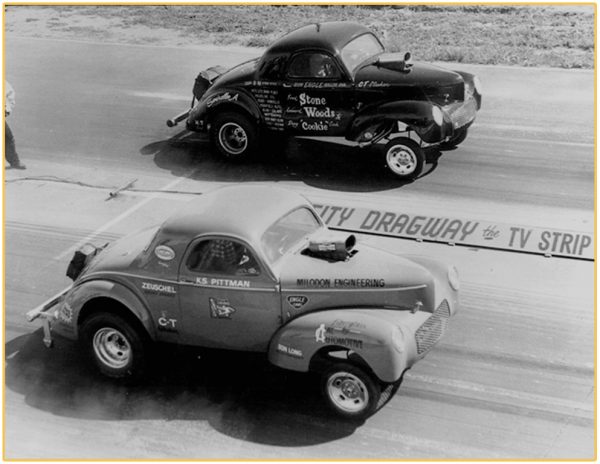
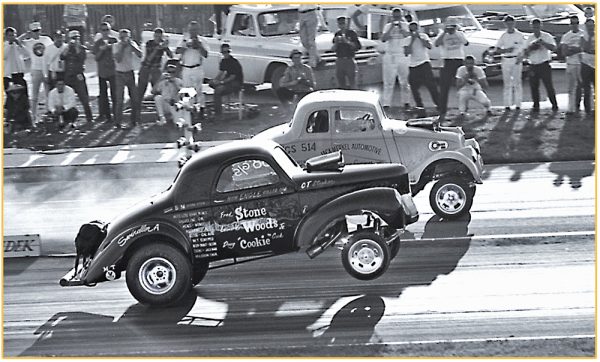
Quite possibly the smallest in stature, but perhaps the most skilled among them, S-W-C driver Doug Cook emerged as an icon of the growing sport. A quiet humble man, Cook was a terror on the track with lightning reflexes and no lack of courage. A native of Little Rock Arkansas, Cook grew up in Los Angeles where his interests and mechanical skills drew him into the vortex of the emerging post-war hot rodding trend. He quickly became known as a skilled mechanic and a capable driver. In the mid-fifties he campaigned a supercharged small block Chevy ’37 Chevy coupe and later a C/GS Willys for Howard Johansen of Howard‘s Cams.
Stone and Woods were campaigning their new B/GS Swindler Willys and they won the ’61 Winternationals with K. S. Pittman driving. But Pittman had his own car and couldn’t race for them full time. Wood’s was already impressed with Cook’s consistent performance with the Howard Cams car and they persuaded him to join their team after the Winternationals. The Stone Woods Cook team was formed and the “Swindler” car series was launched. It was a perfect match. They held the B/GS record for the entire season at 10.99/128.57 mph. It was a landmark season as all of the supercharged gas coupes got significantly faster in 1961 and that solidified the popularity of the Gassers with fans everywhere.
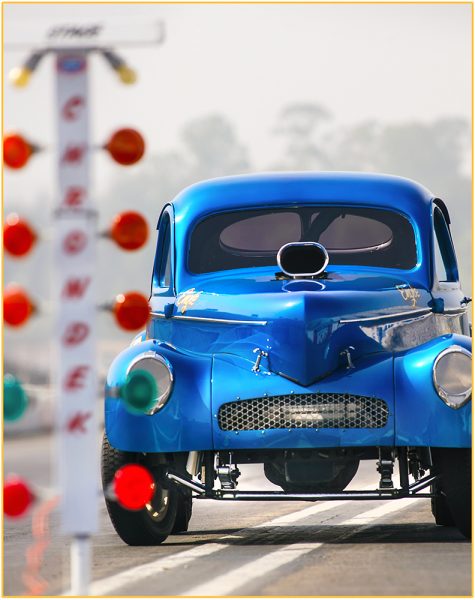
Multiple iterations of the Swindler followed between 1961 and 1966. The first Swindler had been Tim Woods' ‘41 Studebaker with a supercharged Olds V-8. Swindler II, the baby blue car was the first Willys. It was built to run A/Gas and it was a showpiece with a blown 448ci Olds, blue and white tuck and roll interior and roll bar padding, Thunderbird seats and matching door panels. It was totaled in a towing accident on the way back from the ’61 U.S. Nationals. The replacement Swindler II was an identical car. This car reinforced SWC’s claim to drag racing fame. It prompted the Revell Corporation to issue the first S-W-C plastic model kit that was eagerly bought up by thousands of fans.
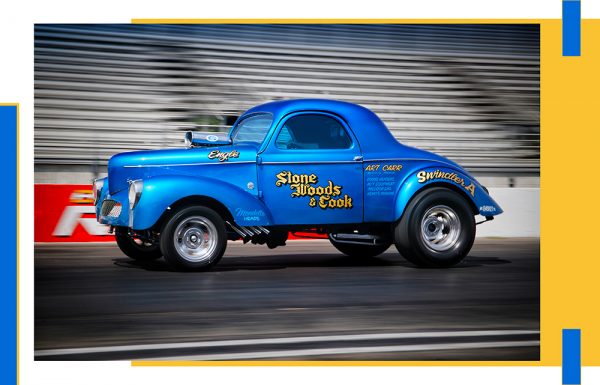
A weight change in the A/Gas category caused the team to build a second Willys for 1962. They started the year with the Olds powered B/GS Swindler II and then built a second car for A/GS. It was a lighter car with a fiberglass front end. It became Swindler A. Swindler A was almost 1,000 pounds lighter than the first Swindler II. It incorporated a single fiberglass bucket seat, Plexiglas windows, and a bigger engine. At the end of the 1962 season, it owned the A/GS record at 10.25/140.84 mph. It also became the first car to run consistently in the nines, with a best pass of 9.79 second.
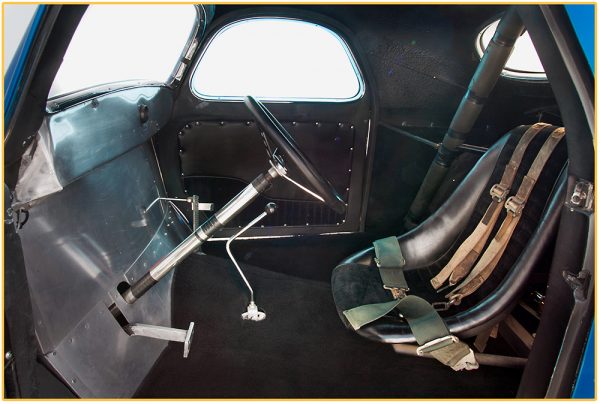
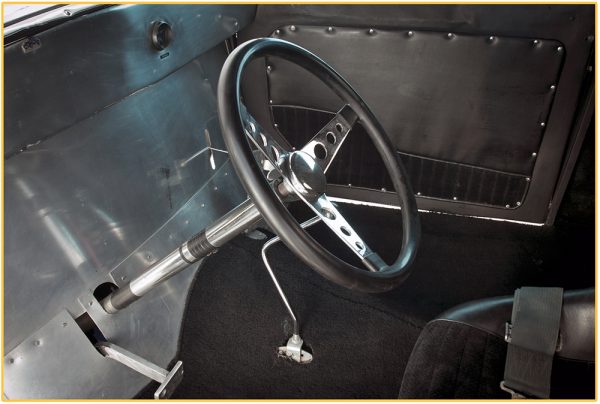
They continued running the Swindler II B/GS car along with the A-car, changing the names to Swindler A and Swindler B for their respective classes. Both cars pretty much dominated their classes most of the year. Swindler A was painted black for a while, but both cars were eventually repainted in the darker and more familiar candy blue. They still ran blown Olds engines and campaigned both cars throughout 1963 with Doug’s brother Ray Cook campaigning the B-car in match racing.
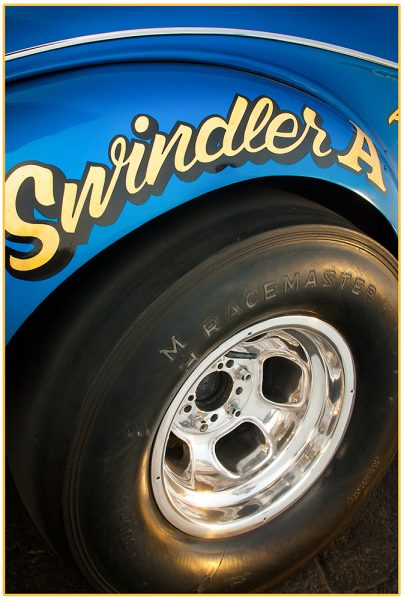
When it became evident that a second driver was needed, Doug went to Irwindale Raceway with Ray and trained him in the ’37 Chevy. Once Ray came up to speed he took over the B-car and raced it regularly with the team. Ray became the principle driver while Doug built and campaigned the new A-car and later the Mustang Funny Car which became the first car in the sevens. Ray then took over the A-car while Doug built the S-W-C A/GS Mustang. Ray Cook is not frequently mentioned in racing lore, but he was an integral part of the team and contributed a lot of wins.
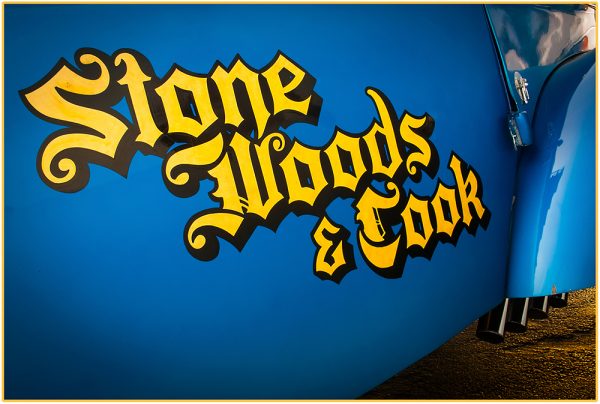
The team didn’t convert to blown Hemis until after winning the ’64 Winternationals over big John Mazmanian. This was part of a follow-on mass exit from Olds power to Chrysler Hemi power as most of the fastest cars switched to the Chrysler Hemi. Cook won the ’64 Winternationals with Swindler A running 10.03 at 142.85 mph. Late in the year the S-W-C team served notice that their Chrysler powered Swindler A was dominant with a monumental blast of 9.57/149.25 mph. Swindler B was also fast , clocking a best of 10.33/134.96 mph.
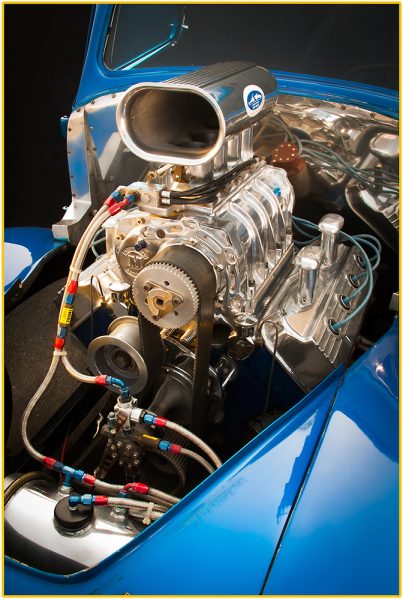
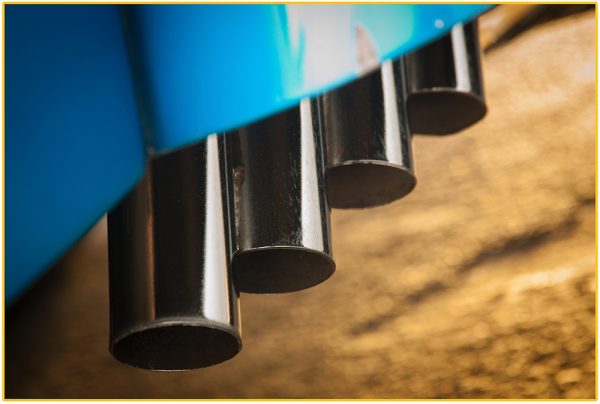
The Swindler B car was eventually traded to Tex Collins of Cal Automotive for fiberglass parts and was later purchased by an east coast hot rodder and restored. Swindler A, the black car was wrecked in a racing accident in 1966. S-W-C built a second Swindler A and continued to run it in A/Gas until 1967 when the Gasser Wars began to fade.
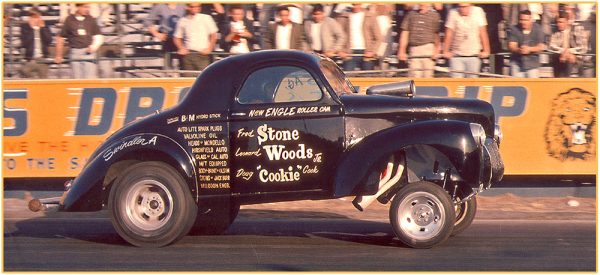
Throughout 1963 and 1964 the tabloid publicity wars raged with teams slinging mud and issuing challenges to grudge matches. Manufacturers such as Iskenderian and B&M stirred the pot, instigating monumental dragstrip wars. Fans ate it up and the racing was fantastic if not incredibly hectic for the racers who were competing weekly on tour. S-W-C campaigned the match race circuit most of 1964 along with the other big names and they became the most popular cars in drag racing.
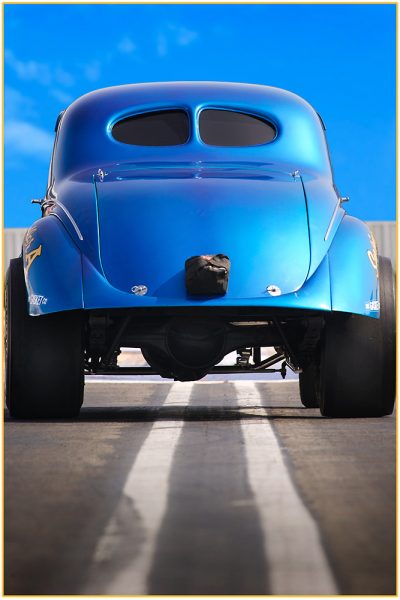
Gasser rules remained unchanged for 1965, but creeping professionalism was lurking in the wings ready to transform the sport. S-W-C and other top teams continued their eastbound touring despite the looming crisis. Doug Cook set everyone gasping at Rockford Illinois when he laid down a scorching 157.78 mph pass and consistent passes in the 9.50’s. Unfortunately for the gassers, the NHRA and their sanctioned strips were starting to promote professional drag racing with Top Fuel cars and experimental stockers. The Gasser days were numbered. Later in the year the S-W-C team was actually booking match races against the newer Funny Cars.
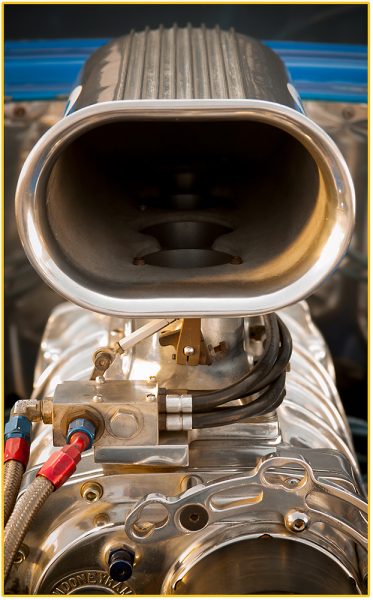
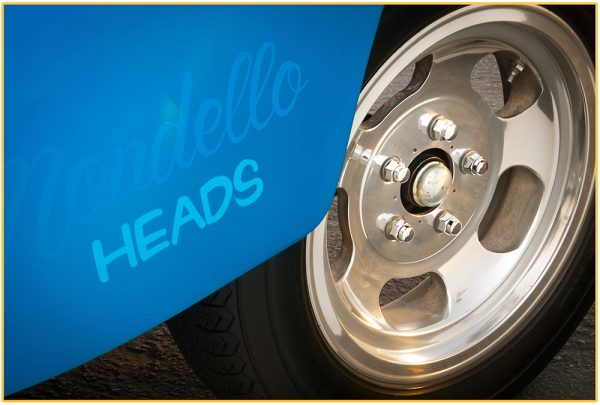
Funny Cars and Top Fuel dragsters became the charm in 1966, relegating the previously popular gassers to second billing. A silver lining emerged as the fuel cars became quite expensive and tracks began paying the less expensive gasser cars as semi-professional teams that were guaranteed to put on a fast, unpredictable show that still pleased fans and drew large crowds. Stone Woods Cook, Big John Mazmanian, Ohio George Montgomery and K.S. Pittman toured a full season despite a mad rush to smaller and likely faster cars like the Austin’s and Anglia’s that began to populate the gas classes. New rules changes including wheelbase restrictions, Torqueflite transmissions and better tires kept the gassers going in 1966. But the Willys days were numbered as smaller cars took over and the new big block Chevy engine began to make a mark.
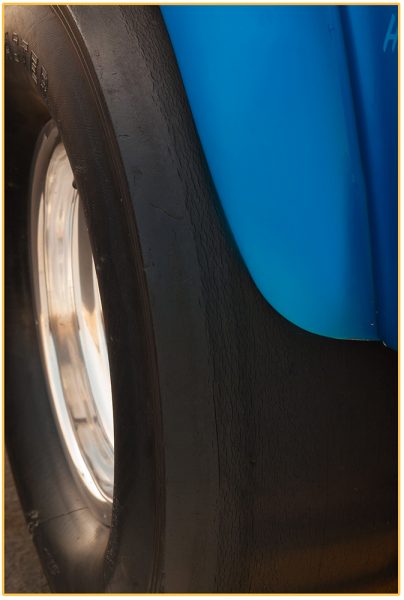
Through 1966 The Stone Woods Cook Swindler Willys remained one of the fastest and most popular cars on the touring circuit. In 1967 the team built the ’66 Mustang, Dark Horse II early funny car, but the effort was brief as Doug was involved in a 180 mph crash at Alton, Illinois that ultimately led to his retirement as a driver. Having gutted the second Swindler A to build the Mustang, the final Willys was slated for the scrapyard when Doug’s son Mike managed to rescue it and later drag race it with a big block Chevy. In the late seventies Mike Cook restored the car to its Gasser configuration and it now resides in Wally Parks NHRA Motorsports Museum. To this day it remains one of, if not THE most popular cars in drag racing history with fans all over the world.
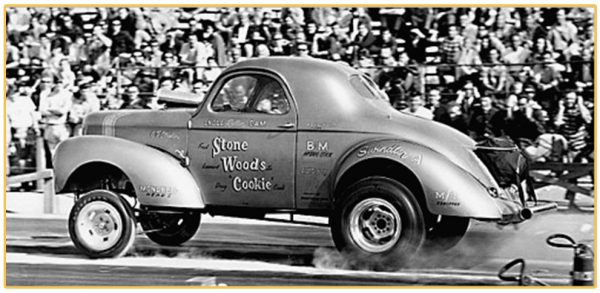
A humble mixed race team from a turbulent era set drag racing on its collective ear and still maintains the attention of racers worldwide more than fifty years after its heyday. Doug Cook retired after the Mustang crash and lived a quiet life helping with son Mike’s Bonneville cars before passing in 1999. Fred Stone passed away in the late seventies and Tim Woods retired from his construction business. Tim’s son Leonard who actually held team ownership for insurance purposes ran a successful Ford dealership in Chino Hills, California for several decades before passing by his own hand when the dealership began to fail from poor sales. These were bold decisive men who braved all odds to campaign a top tier drag racing icon of the sixties; the Stone Woods & Cook Willys Gassers. The black and blue Willys devils of the sixties gasser wars.
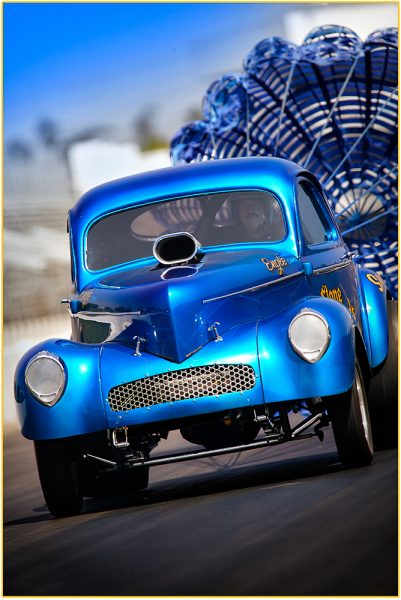
A FEW WORDS…
Mike Cook - On His Father’s Legacy
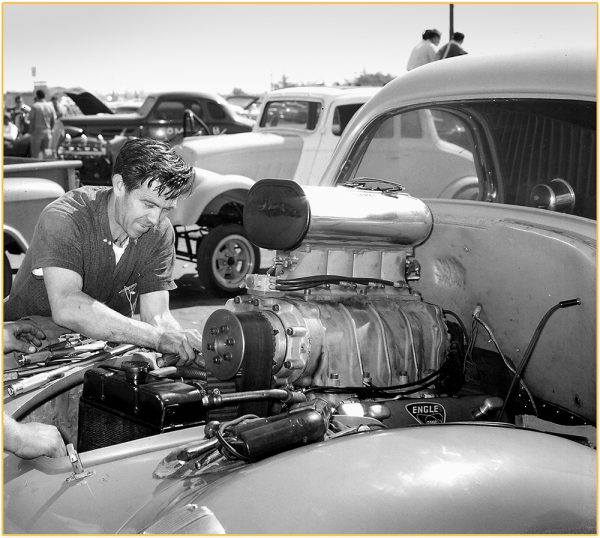
Well, first I’d have to say that Doug was my hero and mentor. I missed a lot of the actual S-W-C years because my dad was always on tour and I was too young. So I kept track of him by saving magazine and newspaper articles in scrapbooks. I didn’t really get to spend that much time with him unless he was racing locally. It wasn’t until after he got hurt in the crash that we really began to grow a relationship. I was about 13-14 and he really didn’t want me to become a driver so he got me working on Mazmanian’s Funny Car and as I got older I got to go racing and on tour with those guys.
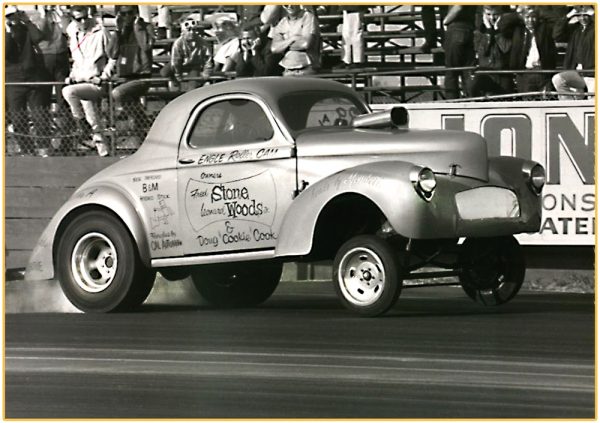
When I finally got into driving at El Mirage and Bonneville he accepted it and decided to help me. He taught me so much about race cars and motors. I learned a lot because he made me do everything myself with his guidance. Doug was a simple, straightforward hard worker. At the track he was totally focused; a racer’s racer if you will. He could fix anything. The word can’t wasn’t in his vocabulary. And he would help anybody fix their stuff.
I remember one time where he tipped a car up on its side against the trailer to straighten the frame. Another time Roger Gates had just made a record pass at Bonneville and blew the freeze plugs out of his motor so he couldn’t make a return run for the record. Doug borrowed some torches and cut little slugs out of Kenny Hoover’s trailer ramps and made some plugs on the sport so Roger could make a return.
“I remember one time where he tipped a car up on its side against the trailer to straighten the frame.”
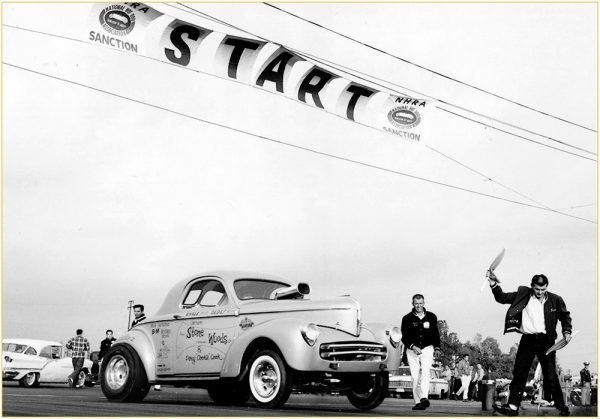
He was a working man’s man and loved by all. We had a standing joke where I told him the one thing I wanted him to leave me in this world was the “magic wand” he used to build and fix race cars and engines. He could sense a problem and walk over to your car, make an adjustment and the car would haul ass. It’s like he was hardwired to each and everything he turned his attention to. But he was also a quiet and humble man who generally avoided the limelight. I’m not sure he ever really realized the legend he had become. He was just “Dougie”; so much more than just a mechanic and race car driver, but he never let on or blew his own horn. That was Doug Cook. That was my dad and I couldn’t be prouder.
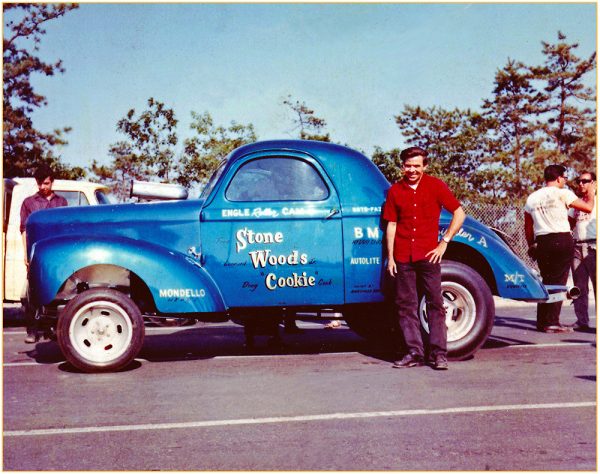
WILLYS ADVERTISING
And a future they never imagined….
